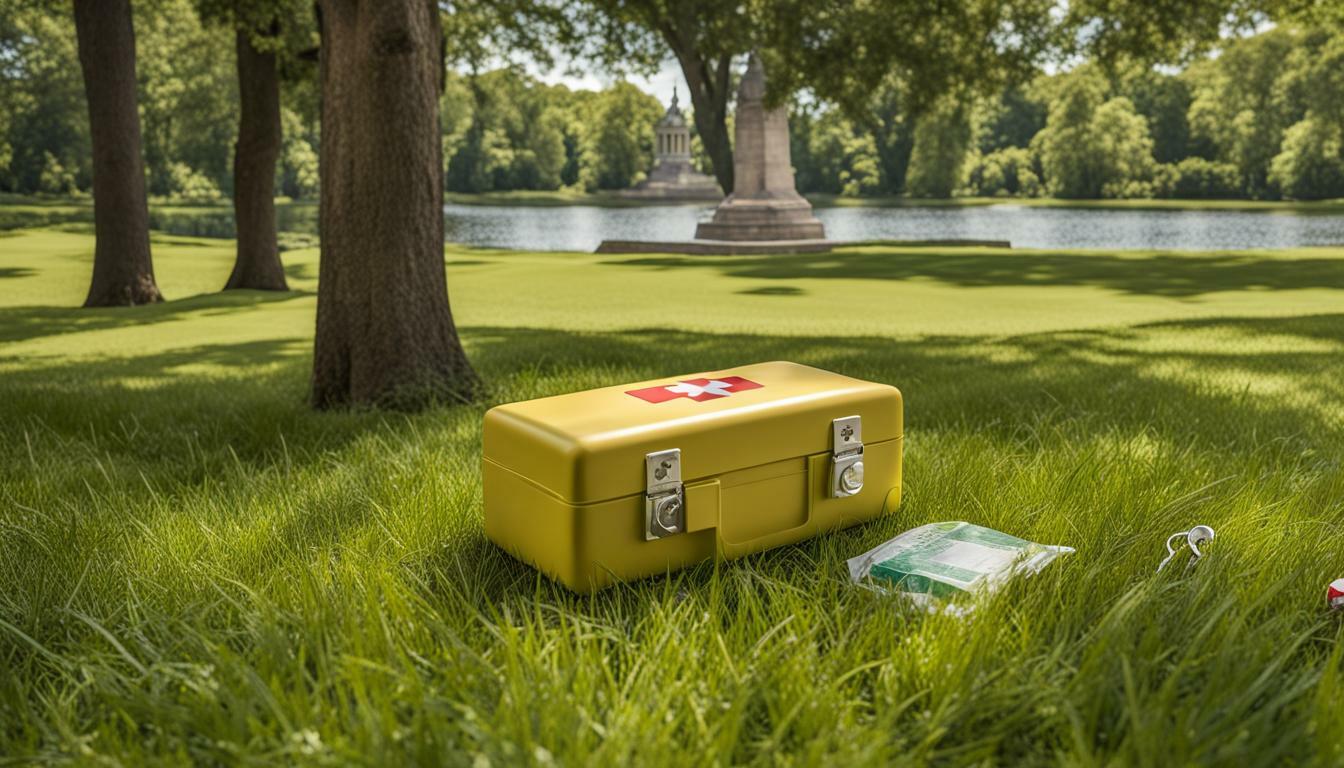Exploring historical sites and landmarks can be an incredibly enriching experience. However, it’s important to prioritize safety when embarking on outdoor history tours. One way to ensure safety is to have an essential first aid kit on hand. In this article, we’ll provide you with tips and guides on what to include in your first aid kit, safety precautions to take, and how to choose the right outdoor safety equipment.
Key Takeaways:
- It’s important to prioritize safety when embarking on outdoor history tours.
- An essential first aid kit is necessary to ensure safety.
- Proper gear and knowledge of safety tips and guidelines are also crucial.
Necessities for Outdoor History Tours
When embarking on an outdoor history tour, it is crucial to prioritize safety by packing essential first aid supplies and taking necessary outdoor safety precautions. Here are some of the necessities to consider:
| Essential First Aid Supplies | Outdoor Safety Precautions |
|---|---|
|
|
In addition to the above, it is important to choose the right first aid kit for the specific outdoor history tour. Consider the duration of the tour, the number of participants, and the specific risks associated with the historical site when selecting a kit. Reliable brands and suppliers can provide guidance on choosing the appropriate first aid kit.
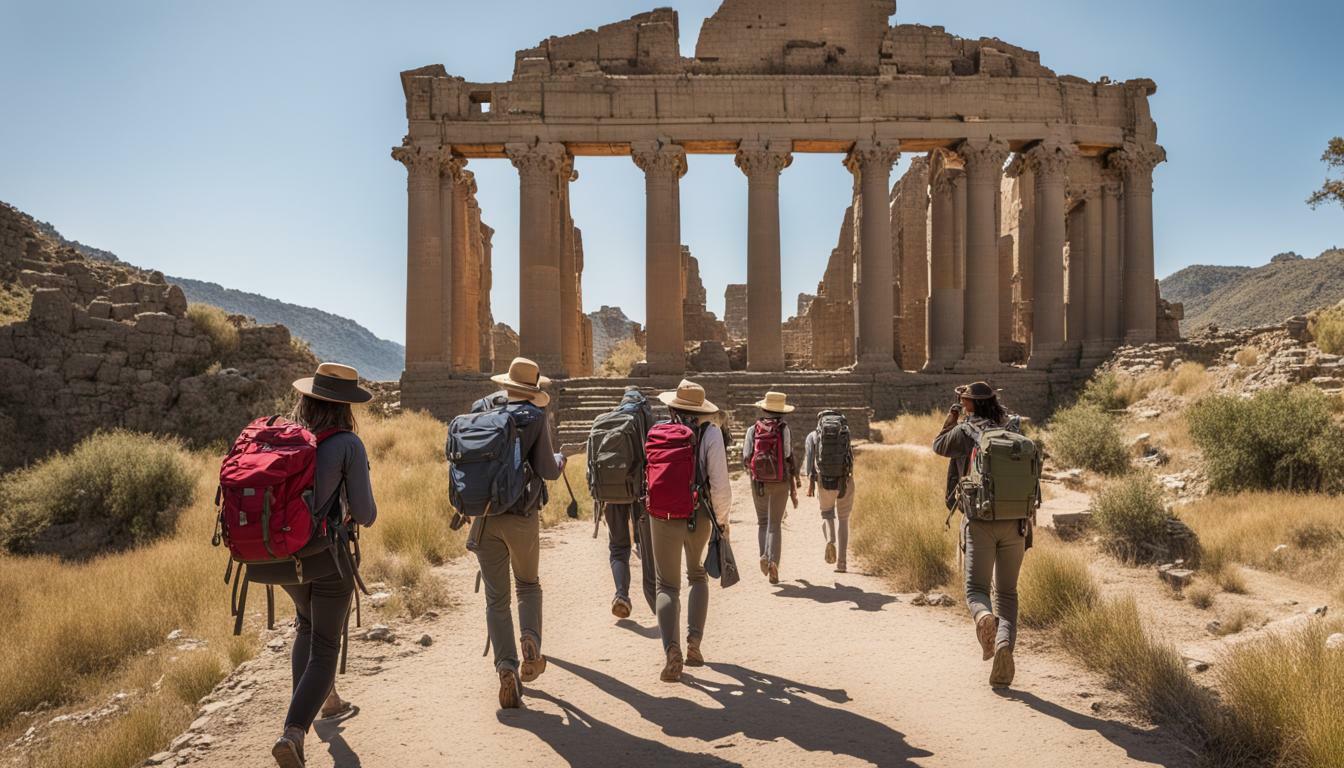
By packing the essential first aid supplies and taking necessary outdoor safety precautions, individuals can explore historic sites safely and enjoyably. Remember to prioritize safety when planning your next outdoor history tour.
Safety Tips and Guides for Outdoor History Tours
Exploring the great outdoors can be an enjoyable experience, but it’s important to prioritise safety at all times. Here are some practical safety tips and guidelines to keep in mind during outdoor history tours:
- Stay hydrated: Drink plenty of water before, during, and after the tour. It’s important to keep your body hydrated, especially during warm weather or physical activity.
- Wear appropriate clothing and footwear: Dress in layers and wear comfortable, sturdy shoes with good traction. Avoid open-toed shoes or sandals that can cause tripping or slipping.
- Be aware of potential hazards: Be mindful of your surroundings and watch out for potential hazards such as uneven terrain, wildlife, or hazardous plants.
- Follow rules and instructions: Listen carefully to tour guides or historical site staff and follow any rules or instructions provided. This can help prevent accidents and ensure a safe visit for everyone.
- Stay on designated paths: Stay on designated paths and avoid wandering off the trail or into restricted areas. This can help protect fragile structures and artifacts, as well as prevent accidents.
- Respect barriers and signs: Pay attention to barriers and warning signs, which are there for your safety. Do not climb on barriers or enter areas that are marked as off-limits.
- Be mindful of fragile structures or artifacts: Avoid touching or leaning on fragile structures or artifacts, which can cause damage. Observe from a distance and take pictures instead.
- Report safety concerns: If you notice any safety concerns or hazards, report them to tour guides or historical site staff immediately. This can help prevent accidents and ensure a safe visit for everyone.
By following these safety tips and guidelines, you can ensure a safe and enjoyable outdoor history tour experience.
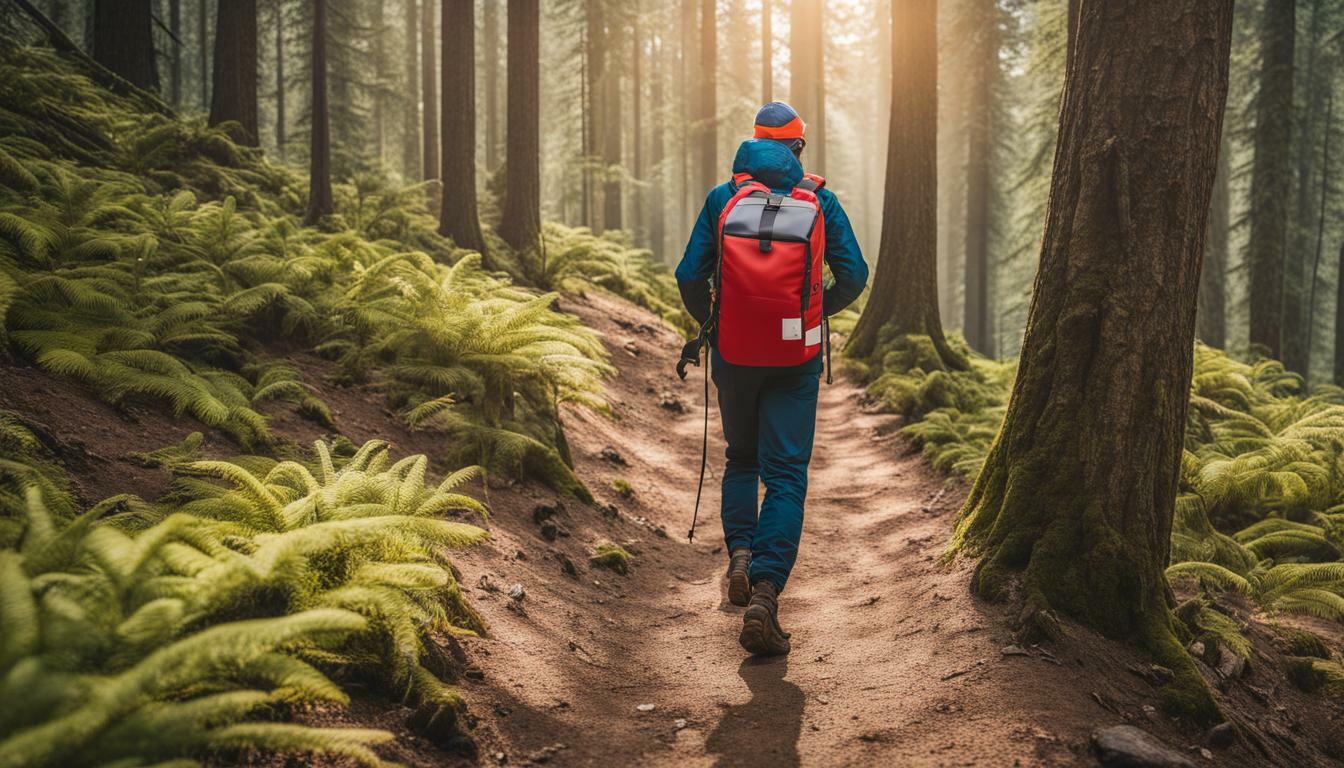
Importance of Informative Safety
When exploring historical sites, it’s essential to prioritize safety to ensure an enjoyable and incident-free experience. Informative safety measures play a crucial role in preventing accidents and promoting a safe environment for all participants.
By being knowledgeable about potential hazards, emergency procedures, and local regulations, visitors can take proactive steps to mitigate risks and avoid dangerous situations. Safety tips and guidelines should be provided to all participants, highlighting the significance of being aware of their surroundings and following any rules or instructions provided by tour guides or historical site staff.
Additionally, having a well-stocked first aid kit and other safety gear can provide added protection in case of emergencies. By choosing the right first aid kit and regularly maintaining its contents, visitors can ensure they have all the necessary supplies to handle minor injuries and illnesses.
Overall, informative safety measures are an essential component of any outdoor history tour. By prioritizing safety, participants can fully immerse themselves in the historical experience while also taking steps to protect themselves and others.
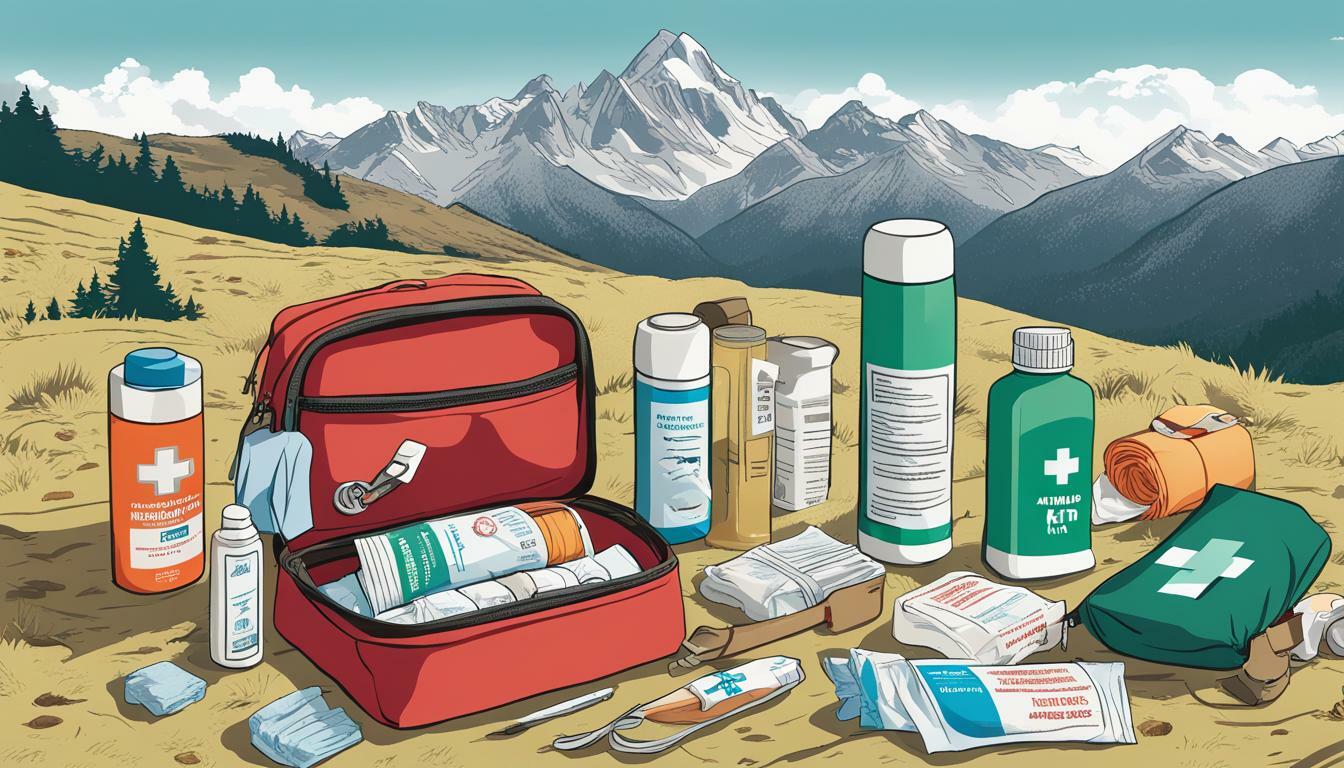
Choosing the Right First Aid Kit
When it comes to outdoor history tours, having the right first aid kit is essential. You’ll want to ensure that you have all the necessary supplies to address minor injuries and illnesses that may occur during the tour. Here are some tips to help you choose the right first aid kit:
- Consider the duration of the tour and the number of participants. A longer tour or a larger group may require a larger first aid kit.
- Think about the specific risks associated with the historical site you’ll be visiting. For example, if the site is known for attracting mosquitoes, you may want to include insect repellent in your kit.
- Choose a first aid kit that includes essential supplies such as bandages, antiseptic wipes, pain relief medication, and any personal medications that participants may need. You can also consider additional items such as a CPR mask or a splint.
It’s important to note that not all first aid kits are created equal. Be sure to invest in a high-quality kit from a reliable supplier. This will ensure that you have access to the necessary medical supplies in case of an emergency.
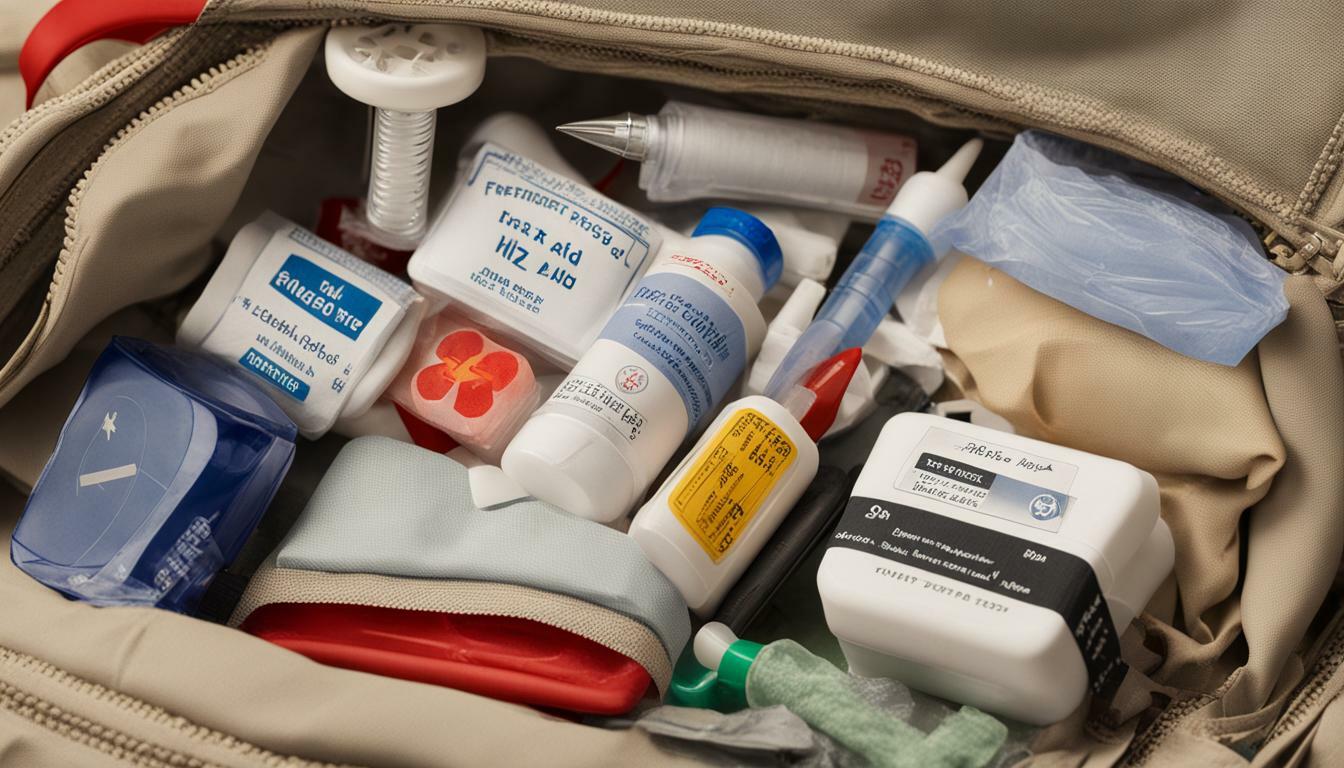
Regularly check your first aid kit to ensure that all medications are still within their expiration dates and that all supplies are intact. By taking the time to choose the right first aid kit for your outdoor history tour and maintaining it properly, you’ll be better prepared to handle any medical emergencies that may arise.
Safety Gear for Historical Tours
When going on a historical tour, it is important to prioritize safety by taking necessary precautions and bringing the right safety gear.
One essential item for any outdoor activity is sunscreen. It is important to protect your skin from harmful UV rays, especially during the summer months. Insect repellent is also necessary to ward off pesky bugs that may carry disease.
Wearing a hat can protect your face and head from the sun, and safety goggles can prevent debris, dust, or other flying objects from getting into your eyes.
Remember to dress appropriately for the weather and terrain. Wear comfortable and sturdy shoes that have good traction to prevent slips and falls. Additionally, wearing light-colored clothing can make it easier to spot ticks or other small insects on your body.
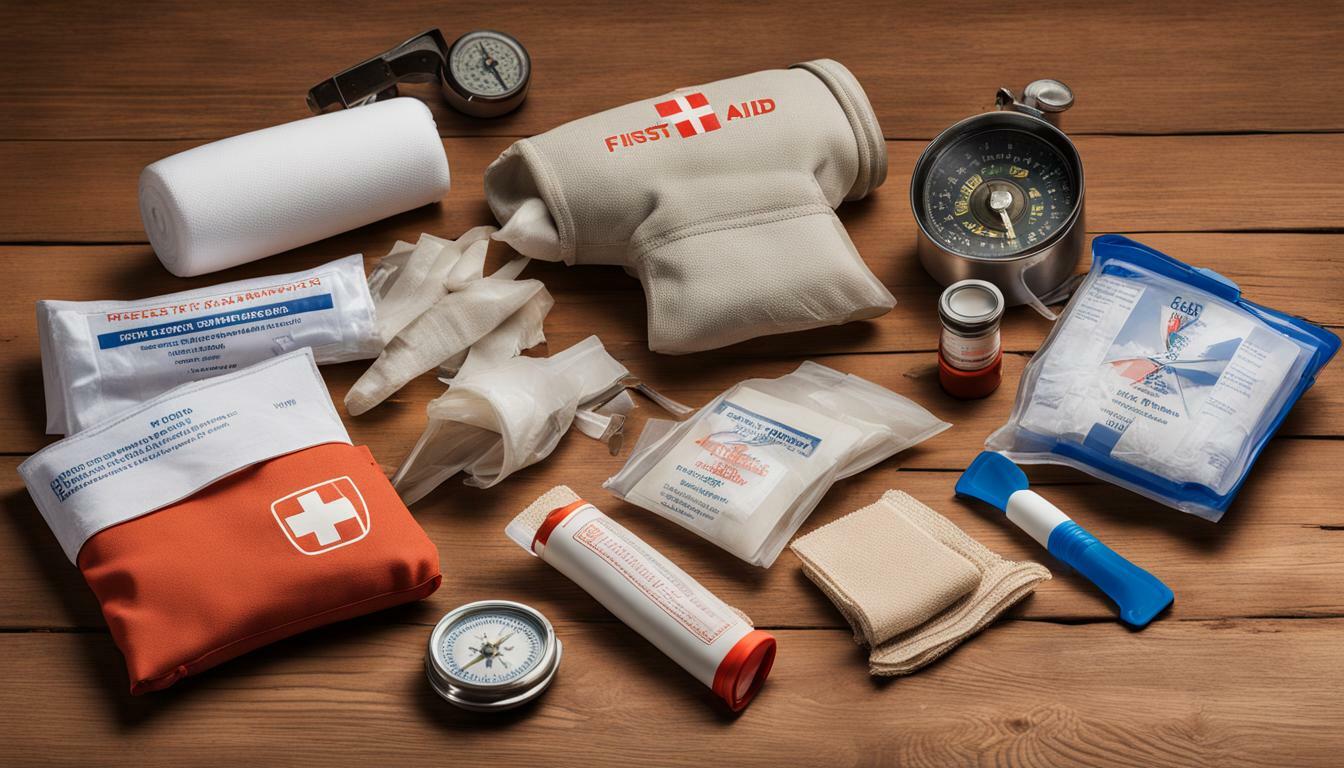
Using the right safety gear can help ensure a safe and enjoyable experience during your historical tour. However, always double-check with your tour guide or historical site staff for specific guidelines on safety gear and equipment.
Exploring Historic Sites Safely
Exploring historic sites can be a fascinating experience, but it can also pose certain safety risks. To ensure that you have a safe and enjoyable visit, it is important to be aware of potential hazards and take the necessary precautions.
Here are some safety tips and guidelines for exploring historic sites safely:
- Stay on designated paths and respect any barriers or signs.
- Be mindful of fragile structures or artifacts and avoid touching or tampering with them.
- Wear appropriate clothing and footwear, taking into consideration the terrain and weather conditions.
- Stay hydrated and bring snacks or water, if necessary.
- Be aware of your surroundings and report any safety concerns to relevant authorities.
Remember that exploring historic sites safely is not only important for your own well-being, but also for the preservation of these important landmarks for future generations.

By following these safety tips and guidelines, you can enjoy a memorable and safe experience while exploring historic sites.
First Aid Training for Tour Participants
It is essential to have a fully stocked first aid kit when embarking on outdoor history tours, but it is equally important to have the knowledge and skills to use it effectively in case of an emergency. Basic first aid techniques can make a difference in critical situations, potentially saving lives and preventing further injuries. Therefore, it is recommended that all tour participants undergo first aid training before embarking on outdoor history tours.
First aid training courses cover topics such as assessing an individual’s condition, providing CPR, treating burns and wounds, and administering medication. Participants will also learn how to use first aid supplies effectively and how to create an emergency plan. These courses are usually offered by local health organizations, community centers, and first aid training companies.
By taking part in first aid training, participants can feel more confident and prepared when heading into potentially hazardous outdoor environments. Furthermore, having several trained individuals on a tour can ensure that there is always someone capable of administering first aid if an emergency arises.
Remember, while having a first aid kit is crucial, knowing how to use it effectively can make all the difference in an emergency situation.

Emergency Procedures and Contacts
While planning an outdoor history tour, it’s essential to familiarize yourself with emergency procedures and important contacts in case of unforeseen circumstances. It’s always better to be prepared than to be caught off guard.
Creating an emergency plan that outlines what to do in different scenarios can help individuals respond quickly and effectively. Your plan should include information such as the location of the nearest medical facility and the contact details of emergency services like the police, ambulance, and fire department.
It’s also vital to have your emergency contacts readily available, whether they are stored on your phone or written down in your first aid kit. Ensure that your tour guide or historical site staff are aware of any pre-existing medical conditions that might require special attention.
When exploring historical sites, it’s important to follow any safety guidelines provided by the organizers. In case of an emergency, immediately alert the nearest authority or the emergency services.
Remember, having a well-thought-out emergency plan in place can make a significant difference in a crisis situation.
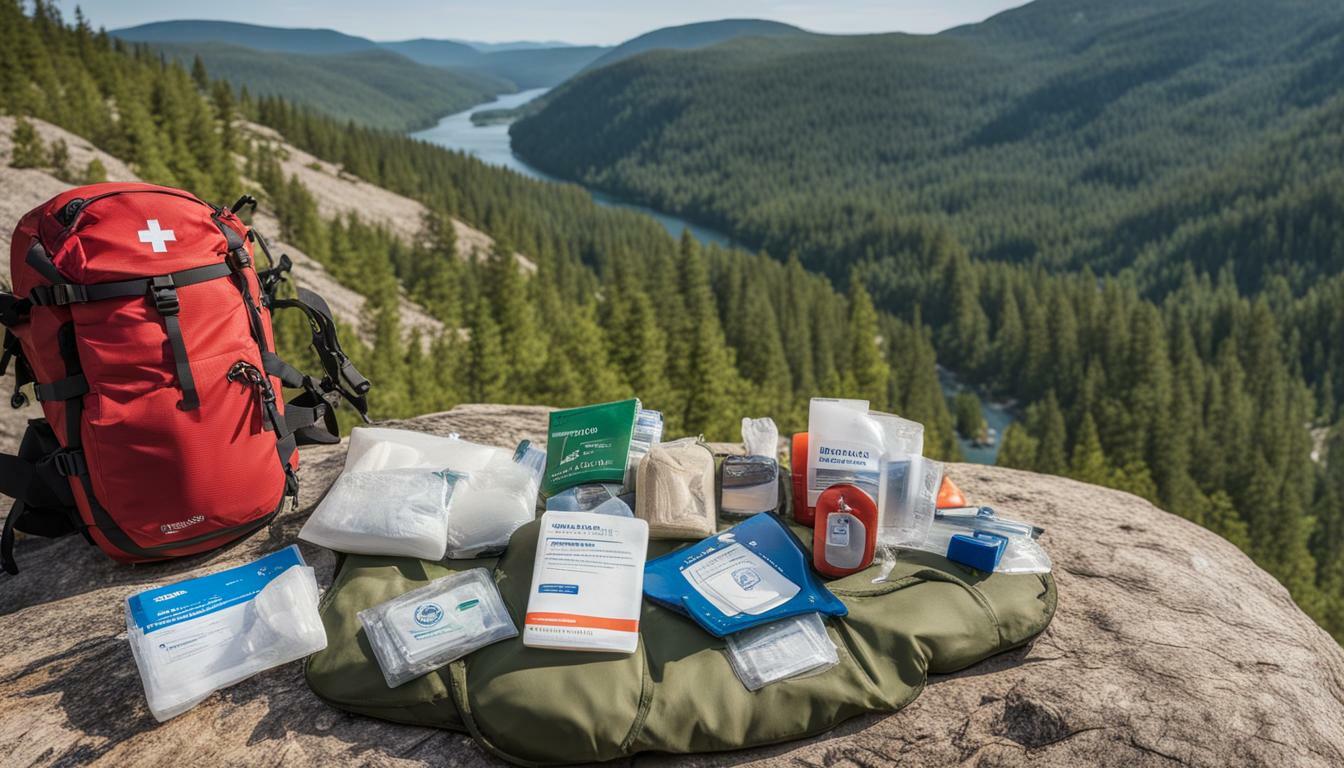
Ensuring Safety for All Participants
When it comes to outdoor history tours, ensuring the safety of all participants is a collective responsibility. While individuals should prioritize their own safety, they should also be mindful of others and share safety knowledge. Here are some tips and guidelines to help create a safe and enjoyable experience for everyone:
- Stay informed: Educate yourself on safety tips and guidelines, familiarize yourself with emergency procedures and important contacts, and follow any instructions from tour guides or historical site staff.
- Report safety concerns: If you notice any potential hazards or unsafe conditions, report them promptly to relevant authorities or tour organizers.
- Look out for others: Pay attention to the needs of other participants, check if they are in good health and have adequate supplies, and offer assistance if needed.
- Share safety knowledge: Help spread awareness of safety tips and guidelines to other participants, encourage others to prioritize safety, and share your own experiences to help others stay safe.
By working together, we can all contribute to a safe and enjoyable outdoor history tour experience.

Importance of Regular First Aid Kit Maintenance
Keeping your first aid kit up to date is essential for ensuring the safety of all participants during outdoor history tours. It is important to regularly check and maintain your kit to ensure that all essential first aid supplies are available when needed. Here are some tips on how to maintain your first aid kit:
| Step | Description |
|---|---|
| Step 1 | Inspect the contents of your first aid kit regularly to ensure that all items are present and in good condition. |
| Step 2 | Replenish supplies as needed, including bandages, antiseptic wipes, pain relief medication, and other necessary items. |
| Step 3 | Check the expiration dates of any medications in your kit and replace them if necessary. |
| Step 4 | Keep your first aid kit in a cool, dry place away from direct sunlight and extreme temperatures. |
Maintaining your first aid kit is an important responsibility that should not be overlooked. By following these simple steps, you can ensure that your kit is always ready for any emergency that may arise during your outdoor history tour. Remember, having a fully functional and up-to-date first aid kit is essential for keeping you and your fellow participants safe.
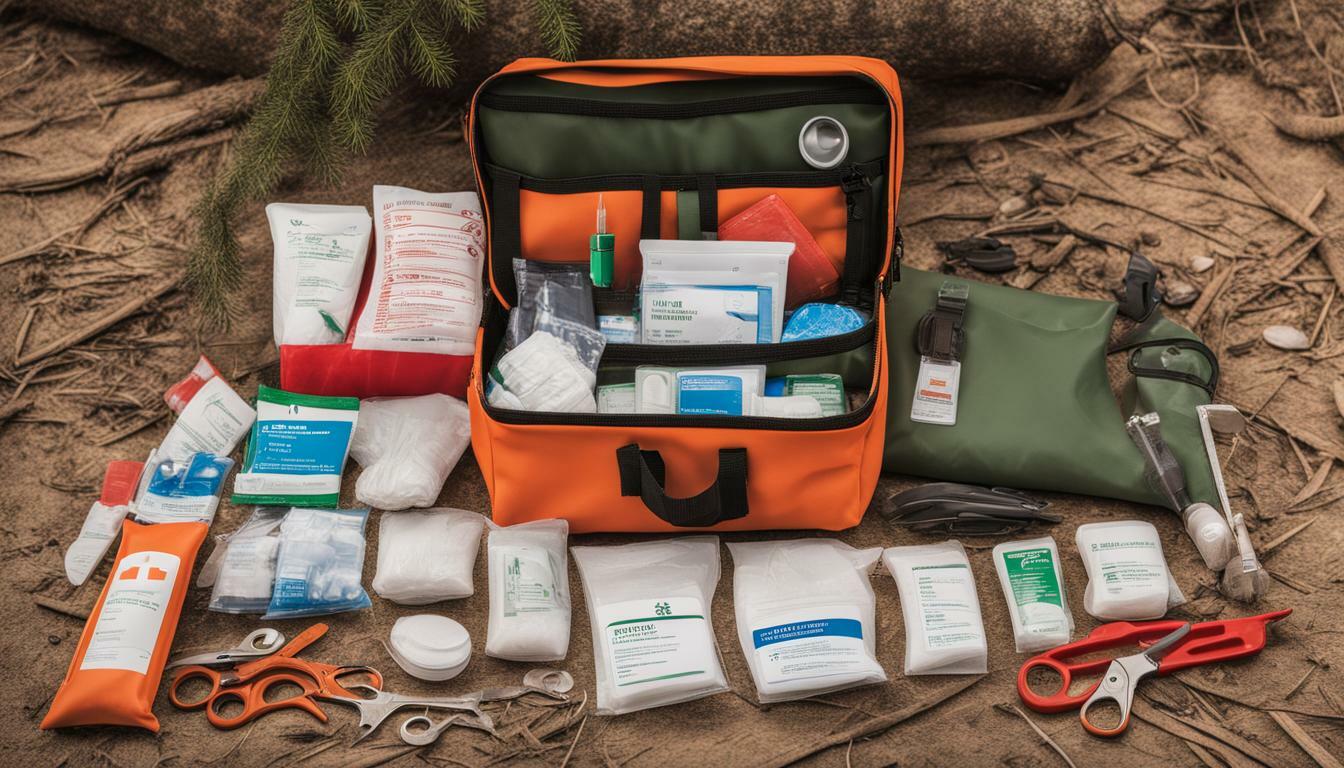
Conclusion
When planning an outdoor history tour, safety should always be a top priority. One of the most important items to bring on such a trip is a fully stocked first aid kit. Make sure to include essential first aid supplies such as bandages, antiseptic wipes, and pain relief medication.
It’s also crucial to be aware of safety tips and guidelines for exploring historic sites. Always stay on designated paths, respect barriers and signs, and be mindful of fragile structures or artifacts.
Additionally, using safety gear such as sunscreen, insect repellent, hats, and safety goggles can enhance your overall safety during outdoor history tours.
Remember to keep informative safety measures in mind, as well as being knowledgeable about potential dangers, emergency procedures, and local regulations. This can make a significant difference in preventing accidents and promoting a safe and enjoyable experience for all participants.
Regular first aid kit maintenance is also essential. Check the contents regularly, replenish supplies, and ensure that medications are within their expiration dates.
Stay Safe and Informed
By following these tips and guidelines, you can help ensure the safety of all participants on your next outdoor history tour. Remember to prioritize safety, use a well-stocked first aid kit, and familiarize yourself with emergency procedures and important contacts.
Informative safety measures can make a significant difference in preventing accidents and promoting a safe and enjoyable experience for everyone.
Don’t forget to use appropriate safety gear such as sunscreen, insect repellent, hats, and safety goggles to enhance your overall safety during outdoor history tours.
Stay safe, stay informed, and enjoy your next historic adventure!
